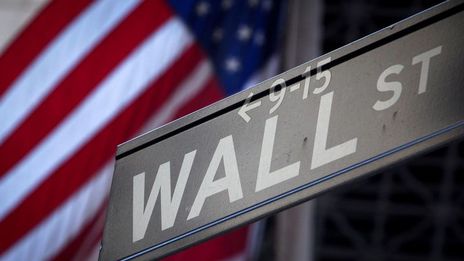By Amara Omeokwe
U.S. consumer prices ticked higher at the end of 2020, as Americans contended with higher gasoline and food costs along with a rise in coronavirus cases across the country.
The consumer-price index -- which measures what consumers pay for everyday items including food, clothing and recreational activities -- increased a seasonally adjusted 0.4% in December compared with November, the Labor Department said Wednesday.
Gasoline prices rose 8.4% over the month, accounting for more than 60% of the overall increase in prices, according to the Labor Department.
In the year ended December, prices were up 1.4%, on a non-seasonally adjusted basis, capping a year that saw muted overall inflation and volatile price swings for some items, amid economic disruptions caused by the pandemic. The consumer-price index's increase during 2020 was the smallest yearly rise since 2015, the Labor Department said.
State and local governments at the end of last year renewed restrictions on businesses and activity in efforts to counter a resurgence in coronavirus cases.
"Prices are likely to remain contained in the very near term as demand comes under pressure from virus-combatting protocols," said Rubeela Farooqi, chief U.S. economist at High Frequency Economics, in a research note.
Economists surveyed by The Wall Street Journal were expecting a 0.4% rise in consumer prices over the month and a 1.3% increase over the year.
Excluding the often-volatile categories of food and energy, so-called core prices were up 0.1% in December versus November and rose 1.6% from the year prior, matching economists' expectations. The yearly increase in core prices has clocked in at 1.6% in each of the past three months.
The overall index on a monthly basis has risen in six of the past seven months. While gains slowed in the fall and into the winter, prices continued a rebound from early on in the pandemic, when they fell as much as 0.8%.
After falling in November, grocery prices rose 0.4% last month. Prices for apparel increased strongly over the month, as discounting was less prevalent during the 2020 holiday season than in typical years, economists said.
Prices for services, excluding energy, were up 0.1% on the month, with a strong rise in costs for motor vehicle insurance. Prices for services such as medical care and transportation fell, however, and service-sector prices broadly have been slower to rebound than goods prices.
Used-vehicle prices fell 1.2% in December, but were up 10%, on a non-seasonally adjusted basis, over the year. Supply chain disruptions contributed to volatile prices for used vehicles last year.
Economists expect the U.S. economic recovery from the pandemic to pick up steam in the second half of this year. In a Journal survey last month, economists on average projected the consumer-price index in June 2021 will be 2.4% higher than the same month in 2020.
"Assuming we do see a full reopening in the months ahead, the combination of increased demand in an economy that has seen supply capacity shrink is likely to generate rapid price increases in several components of the inflation basket," said James Knightley, chief international economist at ING, in a research note.
Federal Reserve officials have signaled plans to keep interest rates low as the recovery continues, even if inflation reaches their 2% target. Fed officials last March cut their short-term interest rate to near zero as part of efforts to bolster the economy, and have since pledged a higher bar to raise rates.
Write to Amara Omeokwe at amara.omeokwe@wsj.com
(END) Dow Jones Newswires
01-13-21 1149ET






















